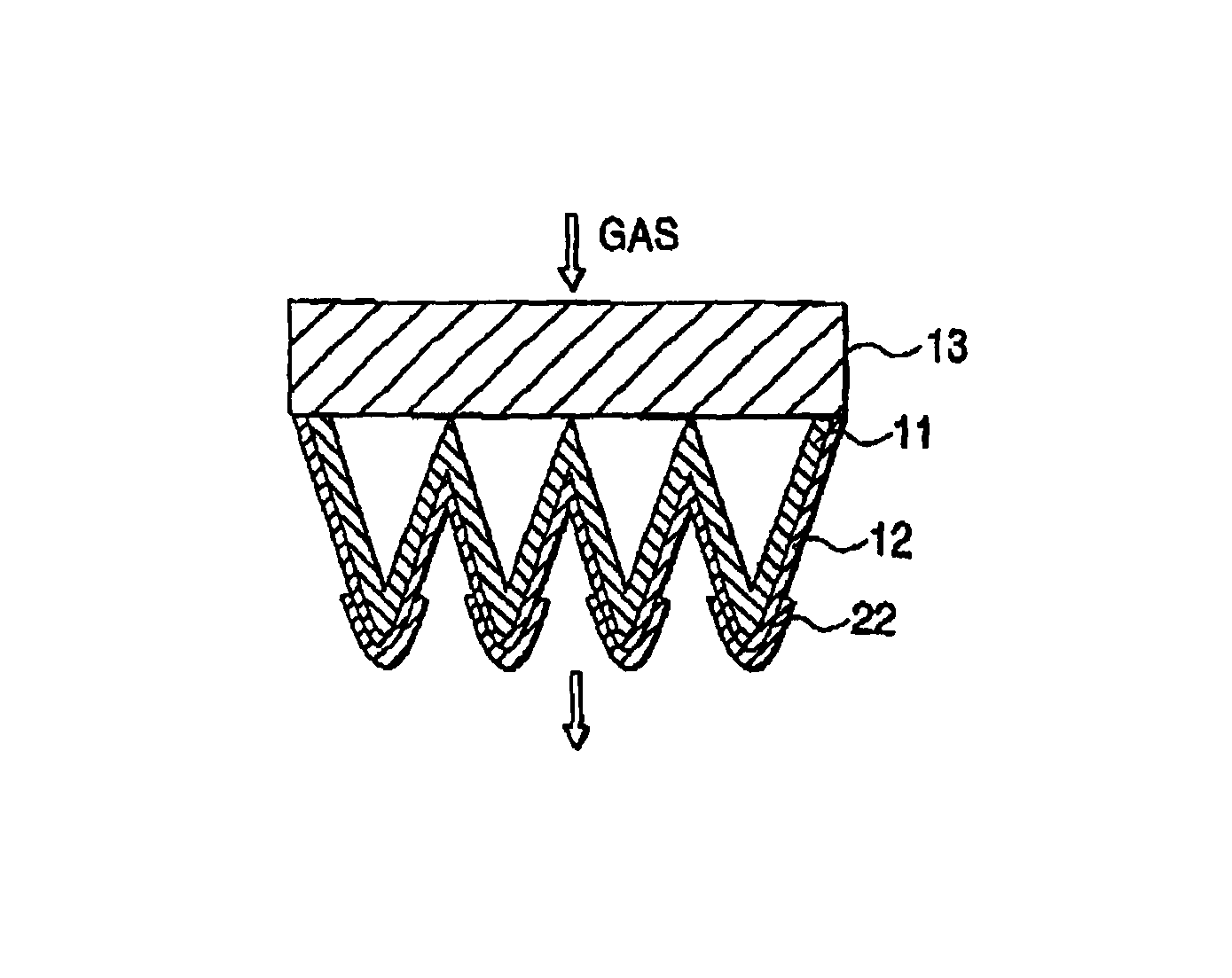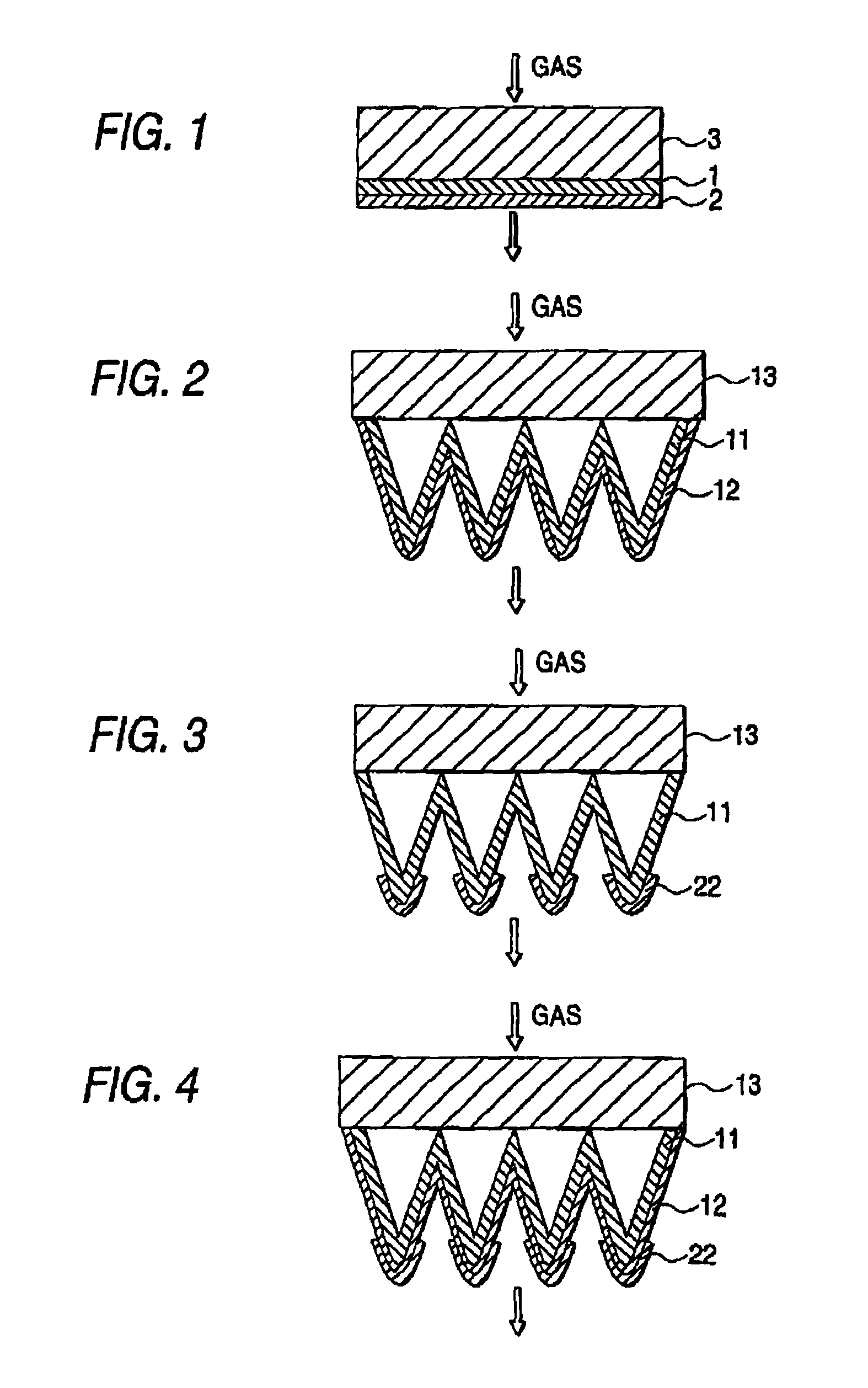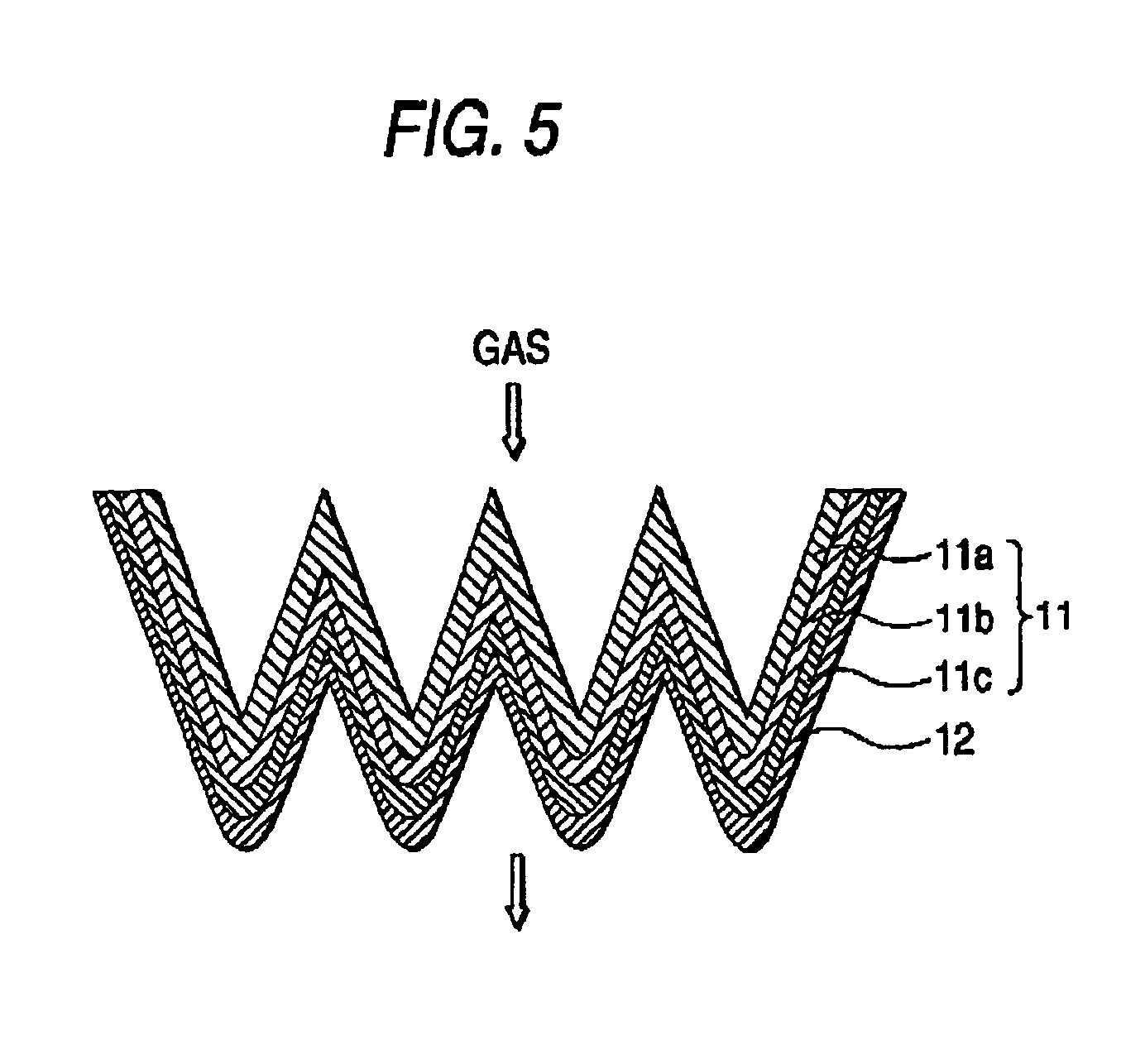Filter element
a filter element and filter element technology, applied in the field of filter element, can solve the problems of carbon dust, filter element compactness, filter element squeezing, etc., and achieve the effects of reducing pressure loss, reducing squeezing, and reducing squeezing
- Summary
- Abstract
- Description
- Claims
- Application Information
AI Technical Summary
Benefits of technology
Problems solved by technology
Method used
Image
Examples
example 1
[0079]The fluorine oil repellent agent was coated on an overall surface of the viscous filter paper (oil amount: 130 g / m2, oil kinetic viscosity: 32.6 cSt) on one side to have a coating amount of 6 g / m2, and then this viscous filter paper was shaped into the ridge-like-folded shape. The filter element was obtained without use of the pre-filter 13 in FIG. 2.
[0080]This filter element was arranged so as to direct the transmission preventing layer side toward the downstream side to accept the air-flow resistance test, the cleaning efficiency test, and the dust holding capacity test.
example 2
[0081]The hot-melt adhesive resin was coated on the root portion areas of the ridges of the viscous filter paper, which is shaped into the ridge-like-folded shape and is the same as Example 1, to have a coating amount of 70 g / m2 such that this resin has a length of 2 to 4 mm from the root bottom to both side directions. The filter element was obtained without use of the pre-filter 13 in FIG. 3.
[0082]This filter element was arranged so as to direct the transmission preventing layer side toward the downstream side to accept the air-flow resistance test, the cleaning efficiency test, and the dust holding capacity test.
example 3
[0083]The filter element shown in FIG. 2 was obtained by arranging the pre-filter [type of the non-woven fabric: PET, thickness: 18 mm, grammage (so called as a metsuke (weight per unit area): 365 g / m2} on the oil-impregnated filter member side of the filter element in Example 1.
[0084]This filter element was arranged so as to direct the transmission preventing layer side toward the downstream side to accept the air-flow resistance test, the cleaning efficiency test, and the dust holding capacity test.
PUM
| Property | Measurement | Unit |
|---|---|---|
| density | aaaaa | aaaaa |
| density | aaaaa | aaaaa |
| temperature | aaaaa | aaaaa |
Abstract
Description
Claims
Application Information
 Login to View More
Login to View More - R&D
- Intellectual Property
- Life Sciences
- Materials
- Tech Scout
- Unparalleled Data Quality
- Higher Quality Content
- 60% Fewer Hallucinations
Browse by: Latest US Patents, China's latest patents, Technical Efficacy Thesaurus, Application Domain, Technology Topic, Popular Technical Reports.
© 2025 PatSnap. All rights reserved.Legal|Privacy policy|Modern Slavery Act Transparency Statement|Sitemap|About US| Contact US: help@patsnap.com



